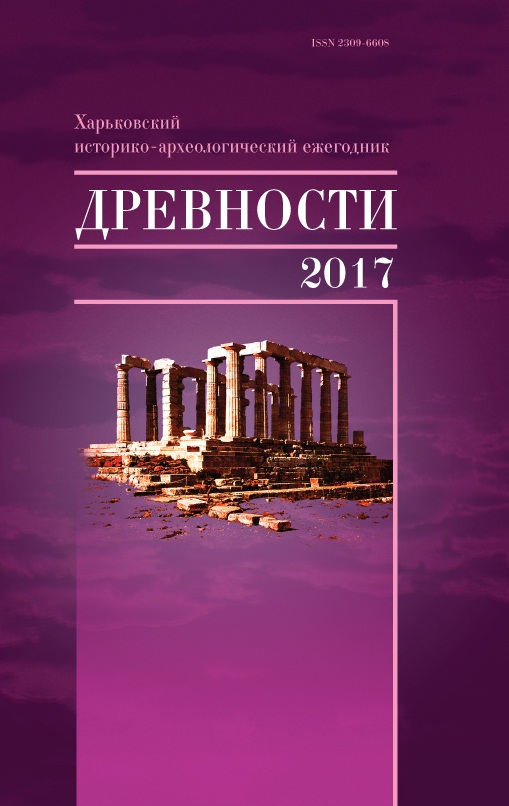Horse Remains from Belozerka culture Monuments of south Moldova
Abstract
The article describes dental and postcranial remains of ancient domestic horses of various individual age from the archaeological monuments of Belozerla Culture Novosio- lovca-1 and Olanesti (Southern Moldova). Upper cheek teeth of the horses under study are characterized by relatively long and variable in shape protocone. Single preserved meta- carpal and metatarsal bones from Novosiolovca-1 are quite elongated and slender, showing a close resemblance to the mean measurement values of horse remains from Late Bronze age and Early Iron Age from Southeast Europe. phalanxes of the ancient horses from Novosiolovca-1 and Olanesti are slender and elongated too, especially the second anterior phalanxes from Novosiolovca. Generally, the postcranial measurements of the horses under study correspond to the semi-thin legged type with “average height” in withers (144–136 cm). One of horse individuals from Novosiolovca-1 shows a specific wear of second upper mo- lar caused by a snaffle bit.
Downloads
References
Браунер А. А. Материалы к познанию домашних животных России. I. Лошадь курганных погребений Тираспольского уезда, Херсонской губернии. Equus Goschkewitschi, mihi // Записки Императорского общества сельского хозяйства Южной России — Oдесса, 1916. — № 86 (1).
Цалкин В. И. Домашние и дикие животные северного Причерноморья в эпоху раннего железа // История скотоводства в северном Причерноморье. МИА — М., 1960.
Цалкин В. И. Древнее животноводство племен Восточной Европы и Средней Азии. — М., 1966.
Цалкин В. И. Домашние животные восточной Европы в эпоху поздней бронзы. Сообщение 3 // Бюллетень Московского общества испытателей природы. Отдел Биологии. — М., 1972. — Т. 77 (3).
Croitor R. Domestic Horse from Early Iron Age of Crimea // Revista Arheologica — Chisinau, 2013. — Vol. 9 (2).
Агульников С., Попович С., Кройтор Р. Комплекс позднего бронзового века из с. Новоселов- ка // Старожитностi степового Причорномор’я i Криму. Збiрник наукових праць. — Запорiжжя, 2014. — Вип. 18.
Opinion 2027 (Case 3010). Usage of 17 specific names based on wild species which are pre-dated by or contemporary with those based on domestic animals (Lepidoptera, Osteichtyes, Mammalia): conserved // Bulletin of Zoological Nomenclature. — L., 2003. — Vol. 60 (1).
Groves C. P. Morphology, Habitat, and Taxonomy // Boyd, L. & Houpt, K. A. (Eds.). Przewalski’s Horse: the History and Biology of an Endangered Species. — Albany, 1994.
Bhattacharyya J., Slocombe D. S., Murphy D. S. The “Wild” or “Feral” distraction. Effects of cultural understanding on management controversy over free-ranging horses (Equus ferus caballus) // Human Ecology — 2011. — Vol. 39 (5).
Витт В. О. Лошади Пазырыкских курганов // СА. — М., 1952. — Т. 16.
Громова В. И. История лошадей (рода Equus) в Старом Свете. Часть 1. Обзор и описание форм // Труды палеонтологического института — М.; Л., 1949. — T. 17 (1).
Кузьмина И. Е. Лошади Северной Евразии от плиоцена до современности // Труды зооло- гического института. — СПб., 1997.
Bendrey R. New methods for the identification of evidence for bitting on horse remains from archaeological sites // Journal of Archaeological Sciences — 2007. — Vol. 34.




